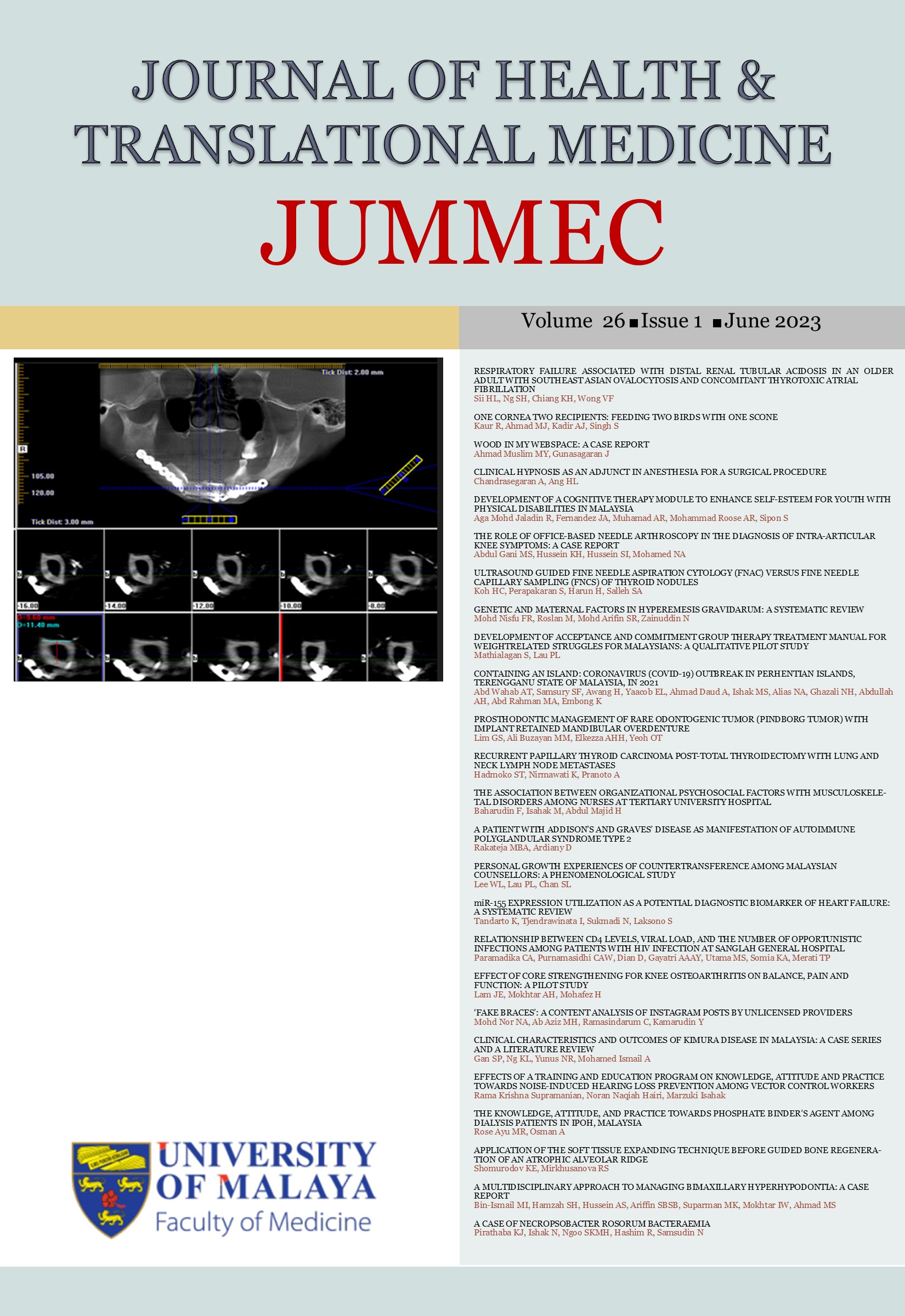THE ROLE OF OFFICE-BASED NEEDLE ARTHROSCOPY IN THE DIAGNOSIS OF INTRA-ARTICULAR KNEE SYMPTOMS: A CASE REPORT
Received 2022-02-21; Accepted 2022-10-03; Published 2023-01-31
DOI:
https://doi.org/10.22452/jummec.vol26no1.6Abstract
Anterior cruciate ligament (ACL) tears are serious knee injuries, whether partial or total. ACL injuries are most typically diagnosed in the clinic settings using a combination of a detailed history, physical examination and corroborated with an appropriate imaging modality. Magnetic resonance imaging (MRI) is highly sensitive for identifying intra-articular knee pathology. This combination has been demonstrated to be effective and non-invasive in diagnosing ACL injury. The reliability of MRI for diagnostic purposes, on the other hand, is not always ideal. This might be due to various factors, including low-quality MRI magnets, post-surgical tissue changes, metallic artifacts, patient movement during procedure, and static rather than dynamic structural evaluation. Nevertheless, office-based diagnostic arthroscopy offers an alternative to imaging modalities by allowing clinicians to visualize large joints safely, painless, high-quality images, and time-efficient approaches. Furthermore, the risk of major and minor complications of office-based diagnostic arthroscopy is comparable to or lower than any standard office-based injection. This is the first office-based needle arthroscopy (OBNA) performed in Malaysia to evaluate intra-articular knee symptoms. Thus, we aim to understand and overview OBNA to identify intra-articular knee pathology by reporting this case report.
Downloads
Downloads
Published
Issue
Section
License
All authors agree that the article, if editorially accepted for publication, shall be licensed under the Creative Commons Attribution License 4.0 to allow others to freely access, copy and use research provided the author is correctly attributed, unless otherwise stated. All articles are available online without charge or other barriers to access. However, anyone wishing to reproduce large quantities of an article (250+) should inform the publisher. Any opinion expressed in the articles are those of the authors and do not reflect that of the University of Malaya, 50603 Kuala Lumpur, Malaysia.


